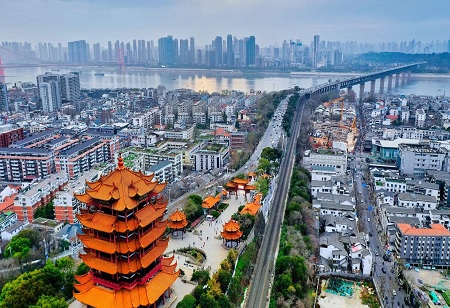
China to Inject Capital into Major Banks for First Time in a Decade

 China is set to recapitalize its largest commercial banks for the first time in over ten years, aiming to bolster an industry facing record-low margins, declining profits, and increasing bad debt. In an unusual press conference, officials announced plans to enhance the core tier 1 capital of its six major commercial banks, along with various other initiatives to support the real estate sector and the broader economy.
China is set to recapitalize its largest commercial banks for the first time in over ten years, aiming to bolster an industry facing record-low margins, declining profits, and increasing bad debt. In an unusual press conference, officials announced plans to enhance the core tier 1 capital of its six major commercial banks, along with various other initiatives to support the real estate sector and the broader economy.
“Capital will be injected to different banks in turns and with different policies”, said Li Yunze, minister of the National Financial Regulatory Administration, without giving more details. The regulator will urge big banks to enhance capital management capabilities and strengthen operations to better serve as a driving force for the real economy, he said.
Officials have unveiled a significant stimulus initiative to boost economic growth. The plan features a widespread reduction in existing mortgage rates, which will increase pressure on banks by decreasing annual interest expenses by approximately 150 billion yuan ($21 billion). Additionally, regulators have lowered reserve requirements for banks and reduced the key policy rate. Li stated that it has become essential to inject capital through various internal and external avenues. This marks the first instance since 2008 that authorities have injected capital into one of the major banks and the first time since they all transitioned to public companies.
“It’s unclear how the state-owned shareholders, including the Ministry of Finance, will increase their stakes in the large banks”, said Liao Zhiming, an analyst at Huayuan Securities Co. “Still, the plan shows regulators are urgently sending positive signals to support the banking industry by stabilizing its main force the big banks in serving the real economy which is under increasing pressure with significant margin declines and ensuring the prevention of systemic risk”.
Major commercial banks, such as the Industrial & Commercial Bank of China Ltd. and Agricultural Bank of China Ltd., have mainly depended on retained earnings to bolster their capital. However, with ongoing fee reductions and loan concessions, net interest margins have dropped to record lows, leading to a slowdown in profit growth. The core tier 1 capital adequacy ratio for the six largest state-owned banks has decreased slightly but still remains at a high overall level. As of the end of June, the average ratio stood at 11.77%, exceeding the 8.5% threshold required for China’s systemically important banks.
The other big lenders include China Construction Bank Corp., Bank of Communications Co., Bank of China Ltd. and Postal Savings Bank of China Co. People’s Bank of China Governor Pan Gongsheng said at the press conference that the new round of interest rate adjustments will have a neutral impact on bank profits and margins, given that more funding is freed up and deposit rates will follow suit.
Banks have implemented several deposit rate cuts to counter the effects of declining loan rates. According to official data, combined profits for China’s commercial lenders grew by just 0.4% in the first half of the year, the slowest growth rate since 2020. Meanwhile, the sector’s net interest margins have continued to fall, reaching a record low of 1.54% by the end of June, significantly below the 1.8% level considered necessary for sustaining reasonable profitability.

